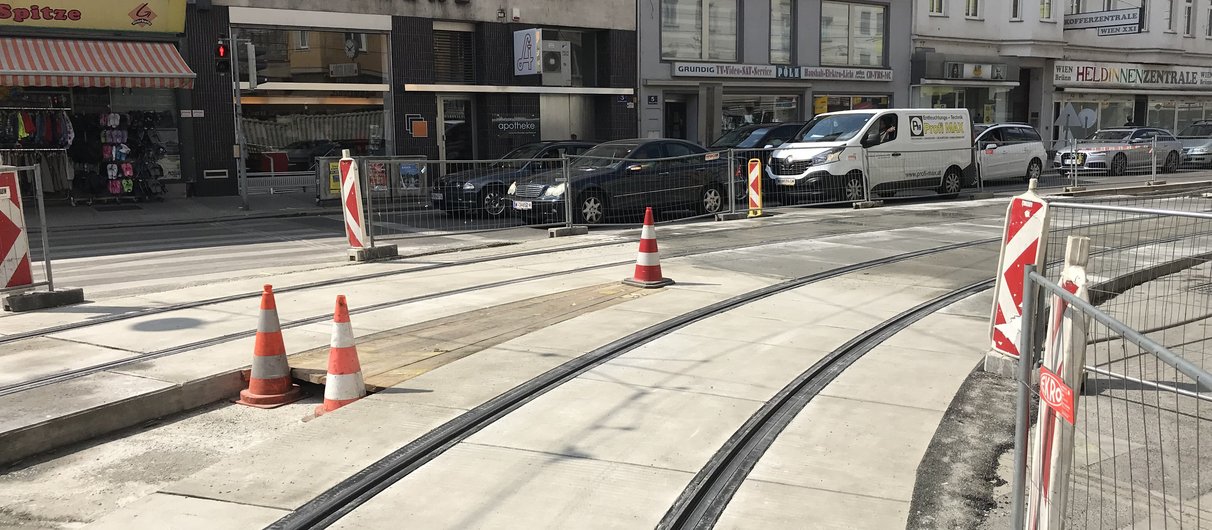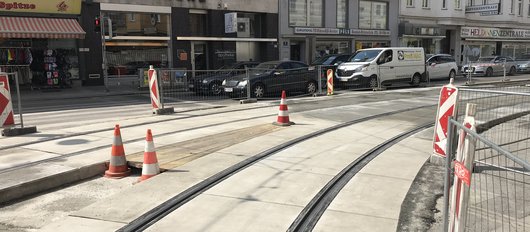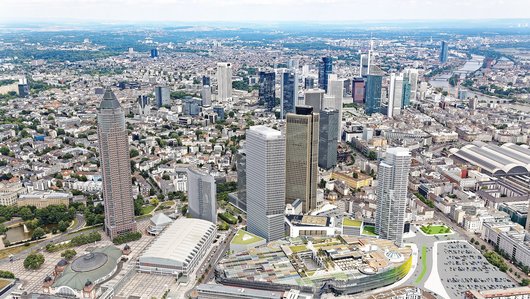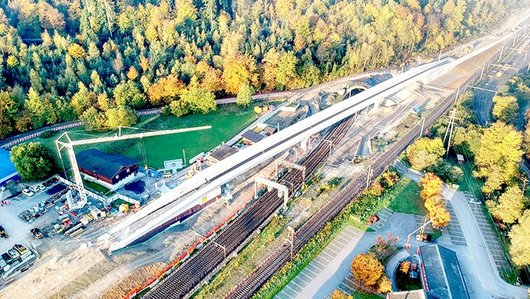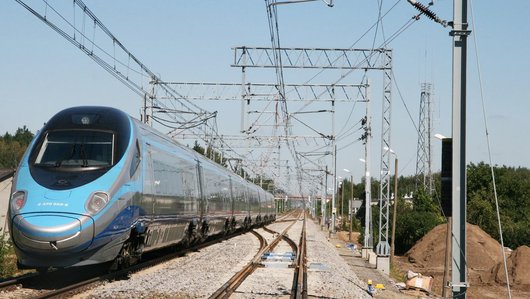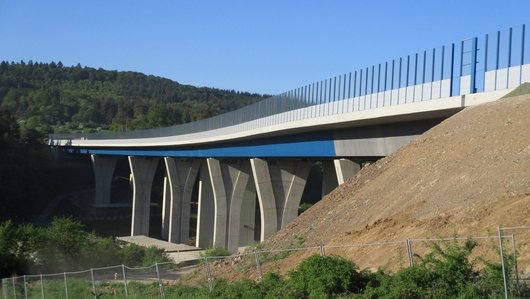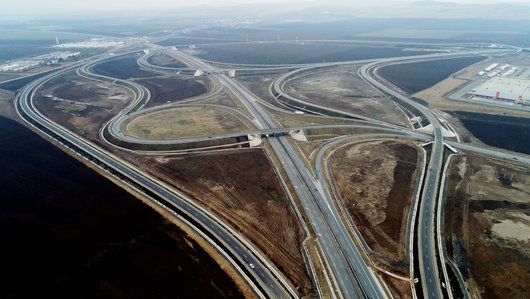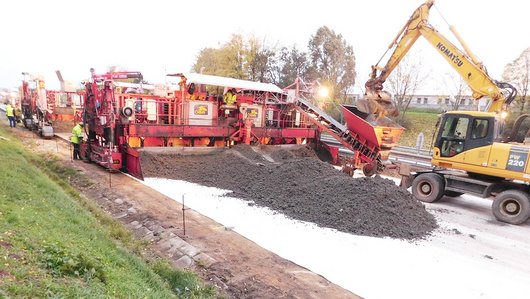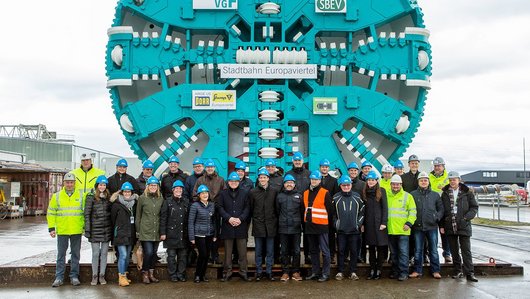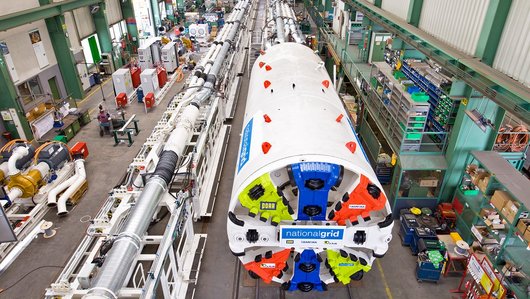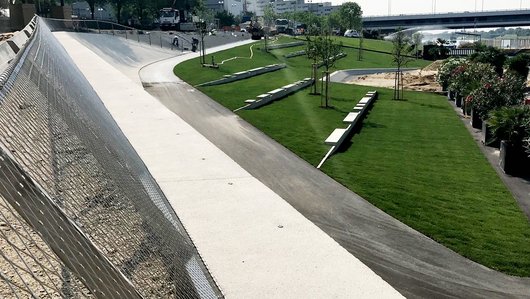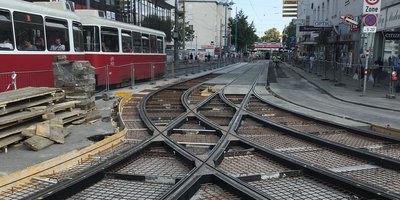
Track and master builder work “Am Spitz”
During a three-month construction period, PORR renovated the tram tracks around the “Am Spitz/Brünner Strasse/Prager Strasse/Schlosshofer Strasse” intersection.
The works were carried out in restricted spatial conditions as the trams continued to operate. In order to keep traffic disruption to a minimum during the construction period, the work was divided into four short construction stages.
-
EmployerWiener Linien GmbH & Co KG
-
ContractorPORR Bau GmbH, Abteilung Bahnbau
-
Order typeGleis- und Baumeisterarbeiten
-
Project typeCivil engineering/Infrastructure
-
Project scopeRenovation of the track slabs and rails, including building surfaces
-
Order volume1,4 million euros
-
Construction start07/2018
-
Construction end09/2018
Background
Over the last few years, PORR has completed numerous tram-related projects for Wiener Linien. PORR was entrusted with a new project at the end of May 2018 with an order volume of 1.4 million euros. The contract included renovating the tracks and switches, the concrete track slabs, the surface covering and two tram stops at the “Am Spitz” intersection, where three busy streets meet: Brünner Strasse, Prager Strasse and Floridsdorf’s main street “Haupstrasse”. Due to the high traffic volumes, the project was divided into four construction stages, each lasting between two and four weeks.
The project was carried out by the Railway construction department, Track construction OST. Minor surface work was done by PORR Civil engineering, Vienna branch.
Complex logistics and varied construction shapes
The intersection is located next to taxi ranks as well as bus stops for Wiener Linien, ÖBB and regional transport. As it furthermore represents the sole delivery route for many businesses, it was essential to ensure access to and from the intersection area throughout the construction work. To achieve this, PORR divided the project into several construction stages. The beginning of each construction stage entailed road closures and setting up diversions – work which was done during the low-traffic night hours.
Due to the densely populated area around the project, at the planning stage the client specified two superstructures for sound insulation and soundproofing. The sound-insulating superstructure was created by laying the jacketed rails on an unreinforced track slab. The soundproof superstructure consisted of a lightweight mass-spring system with 25cm forces. The track slab was strengthened with a reinforcement cage and elastic rubber mats were used to create a separation from the filling concrete either side and from the granular subbase below; this reduces vibrations from the tramway.
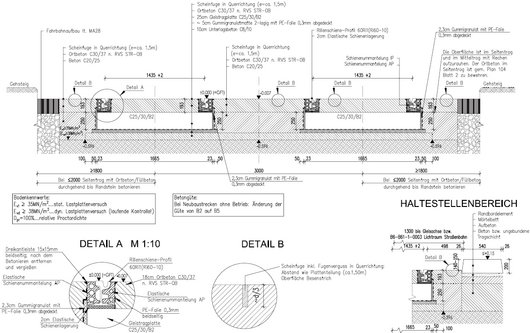

“Due to the project location, we had to install both a sound-insulated superstructure and a soundproof superstructure.”
Construction stage 1, the first three weeks
The first stage involved the northern part of Schlosshofer Strasse and the track curve into Brünner Strasse. The project area was closed to all traffic other than the trams. Right from this first stage, PORR was working with both the superstructures. The straight section in Schlosshofer Strasse was sound-insulated and the soundproof structure was installed for the curve into Brünner Strasse.
During the first part of the work, the existing surface, consisting of pre-fabricated concrete slabs between the rails, was removed.
The existing track slab in the straight sections was removed with a concrete milling machine in the course of track replacement, and the new rails temporarily laid on wooden sleeper blocks. Supporting the track in this way meant that the tram could continue to operate during construction work. In the curve, the concrete track slab was demolished by an excavator with a hydraulic hammer – as it was reinforced, this was a very time-consuming process.
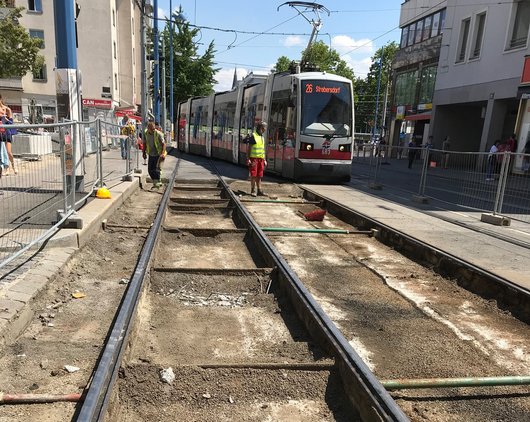

The rails were reaching the end of their service lives. Special care was required when chiselling in order to avoid any breakages.
After the dismantling work, PORR began work in the curve on building the soundproof superstructure. Rubber mats were laid on the granular subbase and the wooden sleeper blocks were replaced with fixed “concrete pedestals”. The reinforcement work was completed and then the track was aligned for position and height, taken off, and concreted overnight.
Once the track slab had been manufactured, work began on creating the surface. The track recesses were sealed with filler blocks. These are 1.5m-long blocks that surround the rails on three sides and minimise vibrations from the tramway. A reinforcement mesh was installed in the intermediate space and then filled with road surface concrete. Due to the restricted space, around 85% of the concrete volume (650m³) was installed at night between 11pm and 5am.
Construction stage 2, the challenge
Once the surface concrete had hardened and the asphalt levelling course next to the track was in place, the second construction phase could begin. The southern part of Schlosshofer Strasse and the eastern half of the Brünner Strasse plateau were closed for this stage, which turned out to be the biggest challenge in the whole project. Altogether, 180 running metres of track, an intersection and a switch had to be renovated. A lot of time was saved by using a concrete milling machine for demolition in Schlosshofer Strasse. The excavator had to be brought in for the switches and intersection area.As the rails in the intersection were reaching the end of their service life, chiselling was carried out with great care, in order to avoid breaking any rails and thereby hindering the tram operation. The new switches and intersection were assembled ahead of installation on the construction site.
Replacing the switch and intersection, including a 9m track section, was a particularly delicate task, which had to be carried out during the night within a mere 3.5 hours. A large vehicle-mounted crane was used to remove the old, worn rails so that the two to six tonne new rail sections waiting at the side could be lifted into place. The rails were connected with iron plates until welded.


A reinforced soundproof superstructure was constructed for the switch and intersection, on 140m² of sound insulation mats. The intersecting rails and the track rods used to maintain the distance between the rails made installing the reinforcement a real challenge. During the morning and afternoon rush hours, a tram crossed the intersection every two to three minutes, making it impossible to keep up continuous work. Despite the high frequency of trams in this area, the section was completed before the intermediate deadline, avoiding a contractual penalty.


Construction stages 3&4, completion
The greater distance to the neighbouring buildings in the last two construction stages meant that the simpler sound-insulating superstructure could be used. While replacing the track, the existing track slabs were milled, aligned, and then concreted. For the very tight curve from Prager Strasse towards “Am Spitz”, a lubrication system was built at the start of the curve from each direction: the lubricating film minimises the squealing from the rails. This area also included two tram stops that needed to be renovated; they were closed for two weeks by Wiener Linien. Once the new guide wall elements had been laid, the asphalt surface was installed by PORR Civil engineering, Vienna branch.
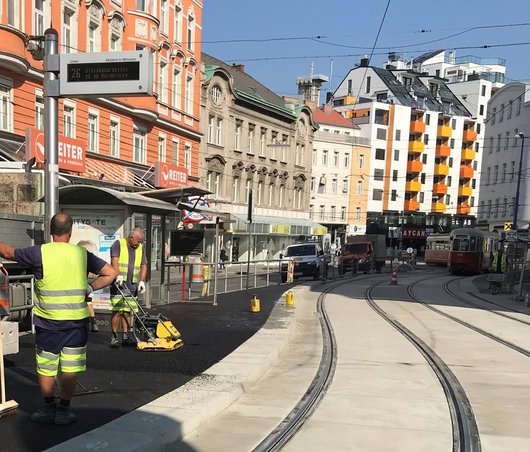

Conclusion
Despite the very hot summer presenting challenging conditions for both workers and machinery, all work was completed on schedule and to the complete satisfaction of the client.
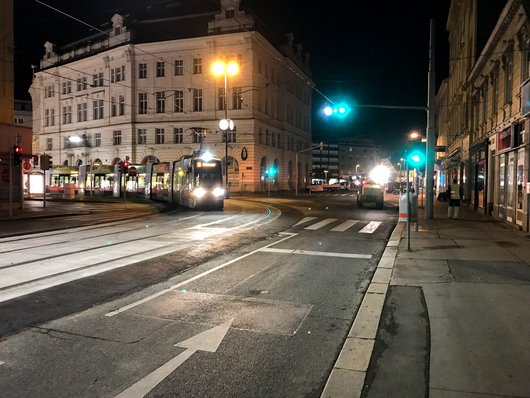

Technical data
-
Concrete demolition290m³
-
Concrete milled190m³
-
Switches replaced1
-
Intersections replaced1
-
Verbauter Beton770m³
-
of which road surface concrete as per RVS290m³
-
Filler block elements for grooved rail2.600lfm
-
Bituminous joint sealant3.600lfm

![[Translate to English:] Once the reinforcement work was complete, the rails were “packed in” from three sides with filler blocks. A construction site where workers are installing rails on a newly laid track bed.](/fileadmin/_processed_/b/2/csm_Bild_12_1e3f558c9f.jpg)
![[Translate to English:] Once the reinforcement work was complete, the rails were “packed in” from three sides with filler blocks. A construction site where workers are installing rails on a newly laid track bed.](/fileadmin/_processed_/b/2/csm_Bild_12_d24ed8ca0a.jpg)
